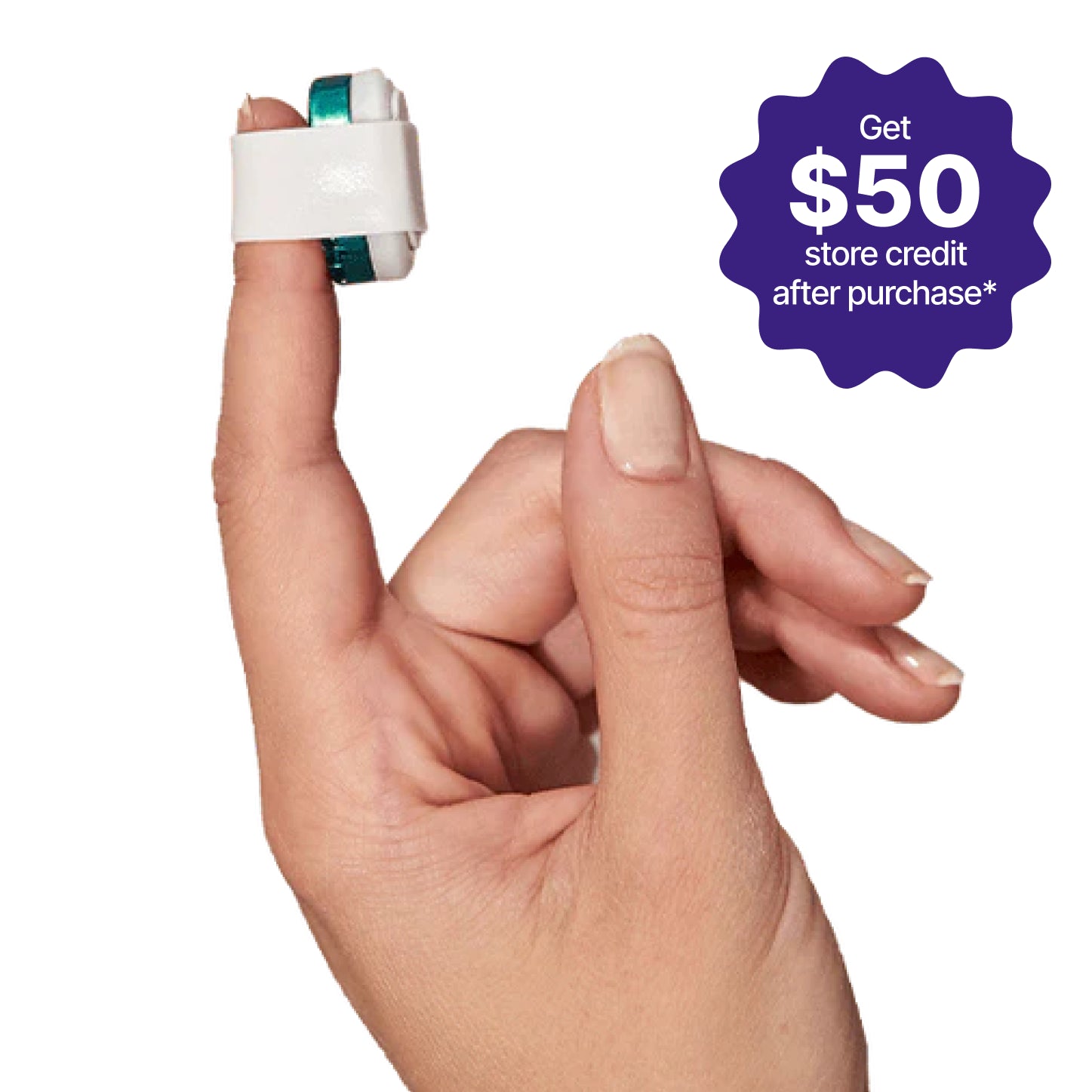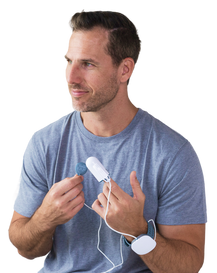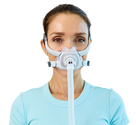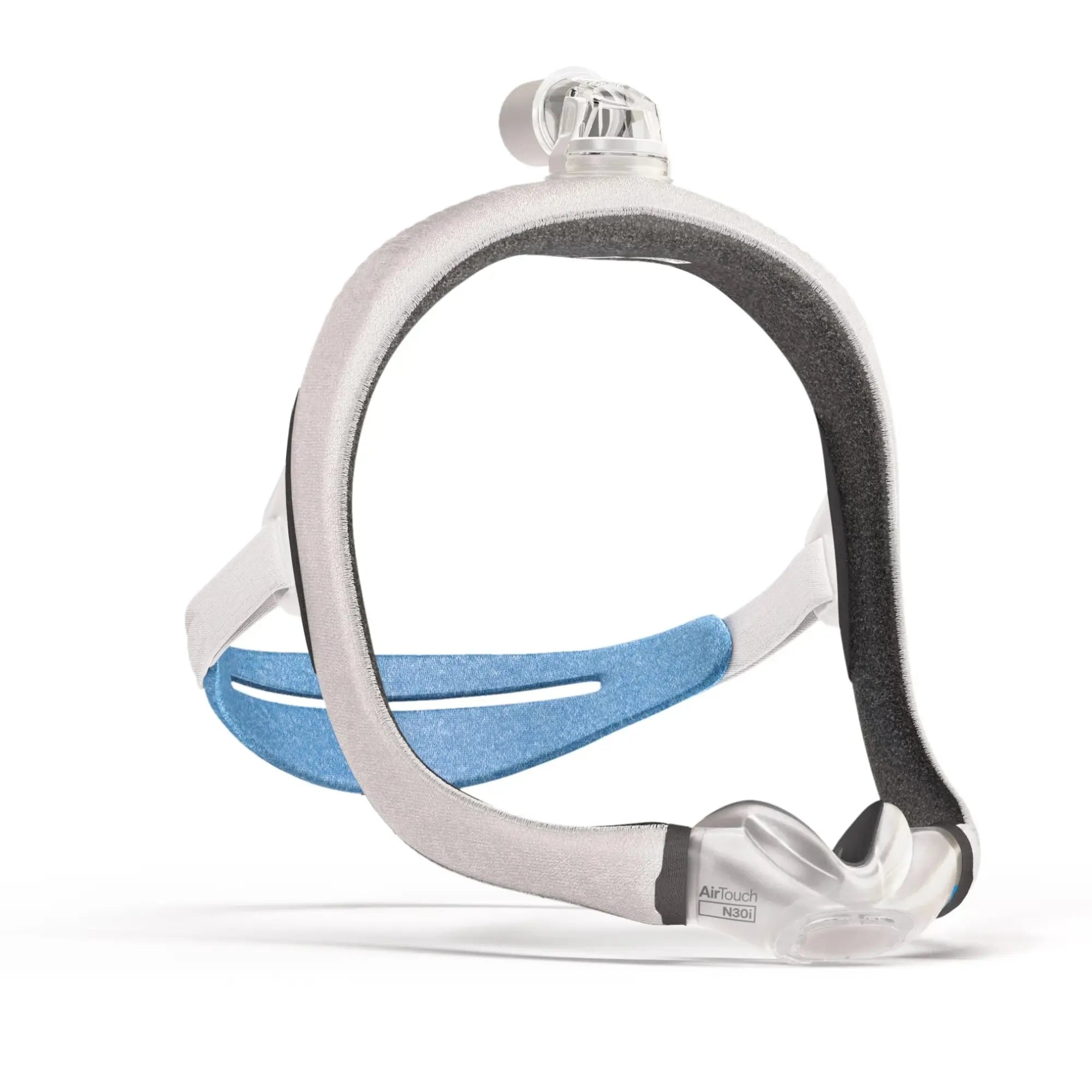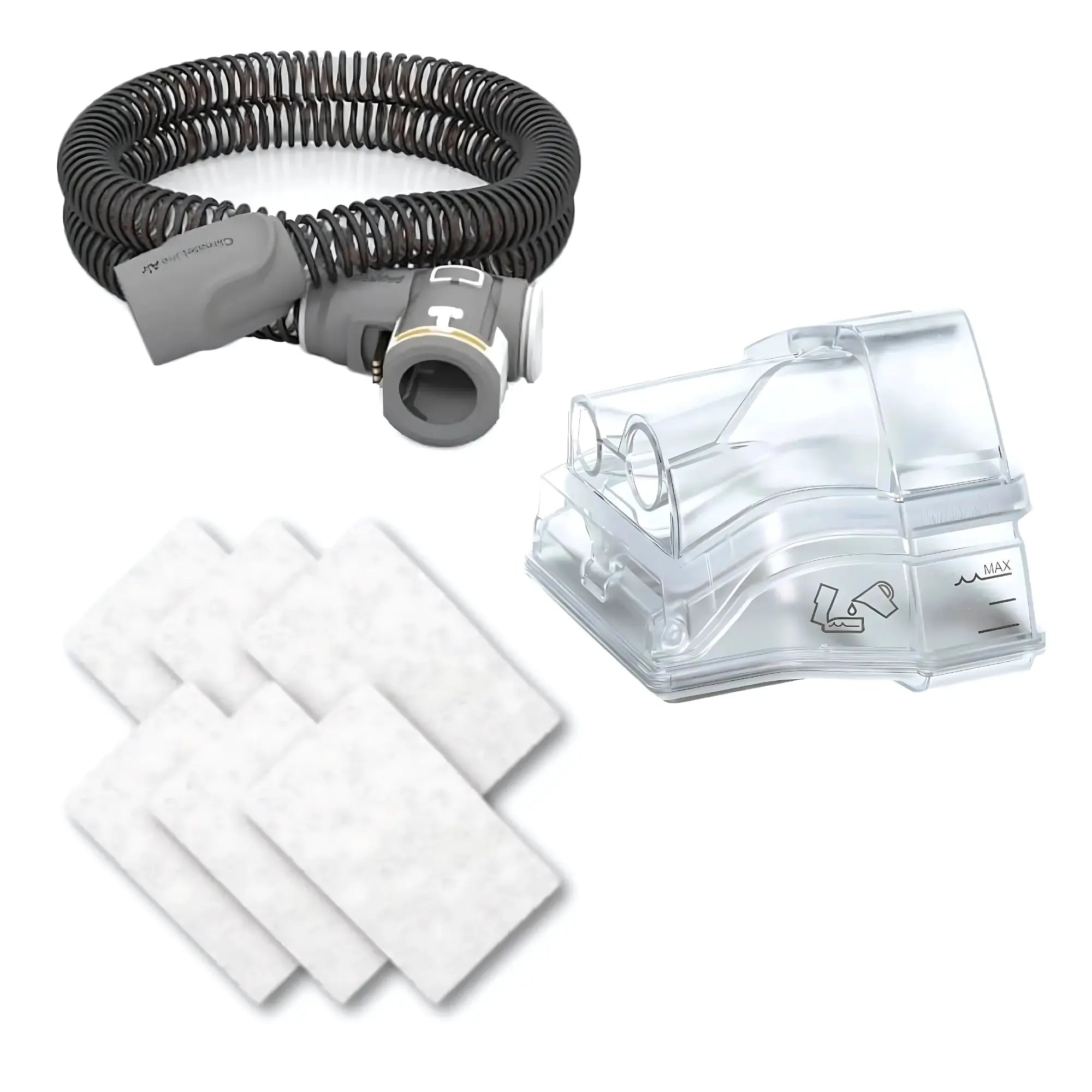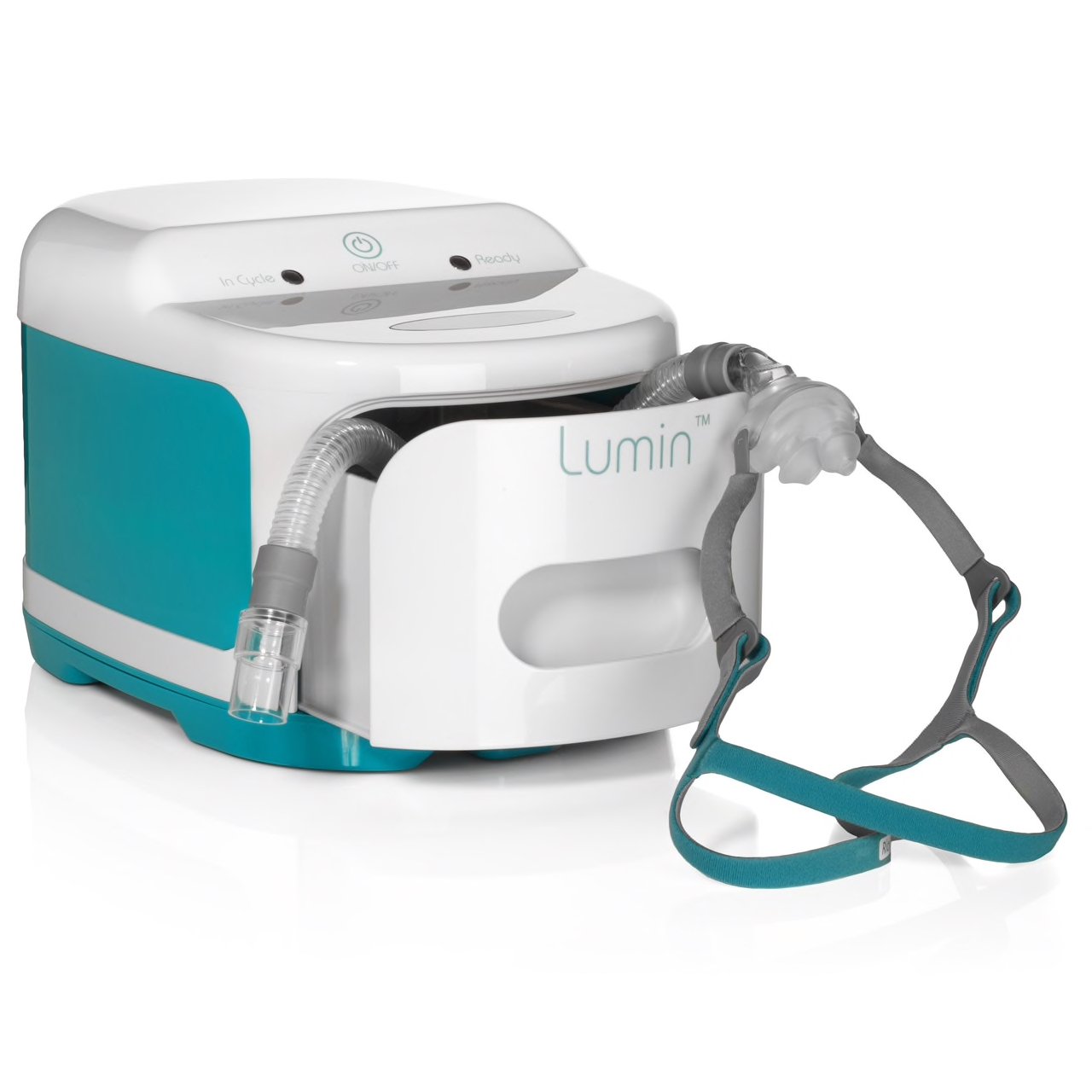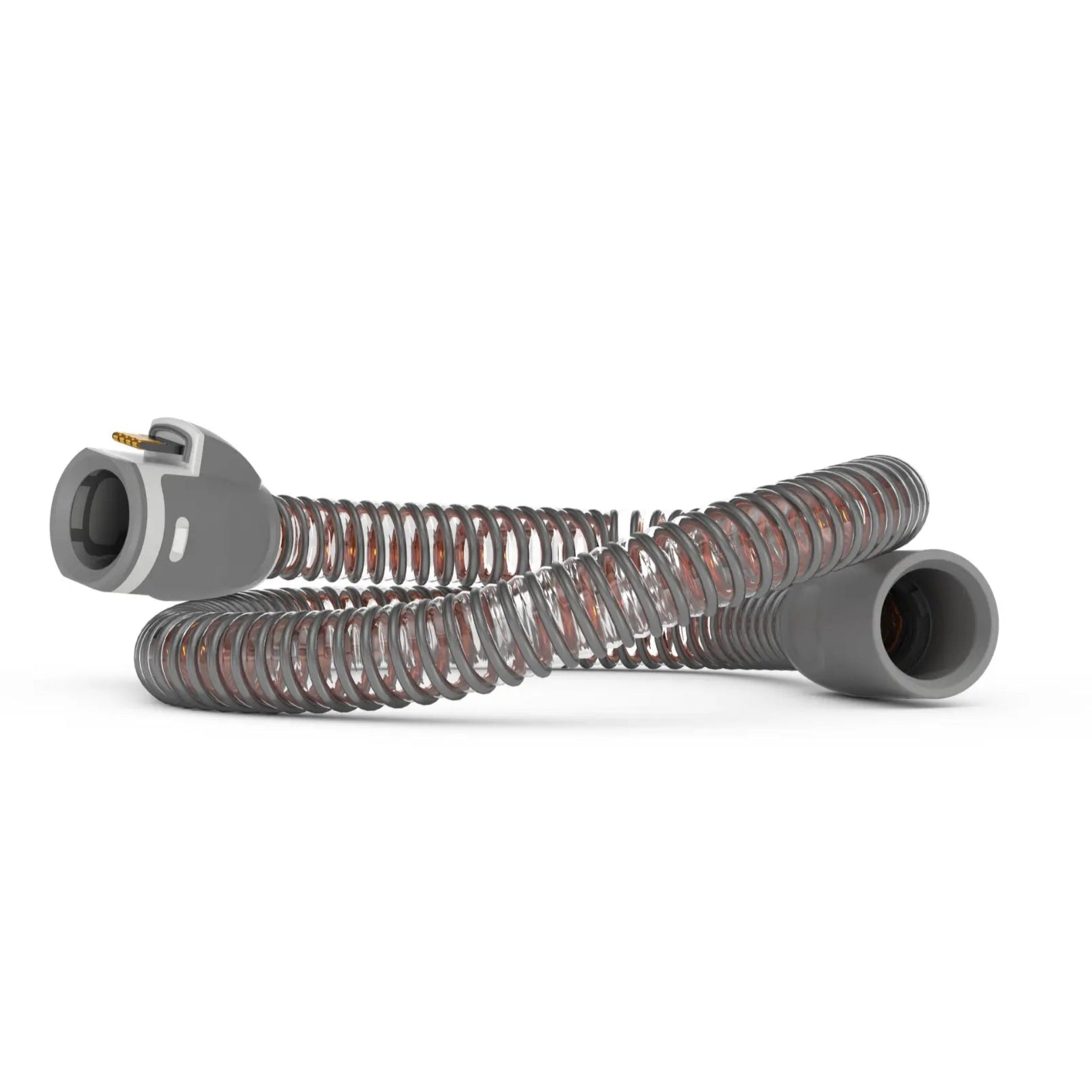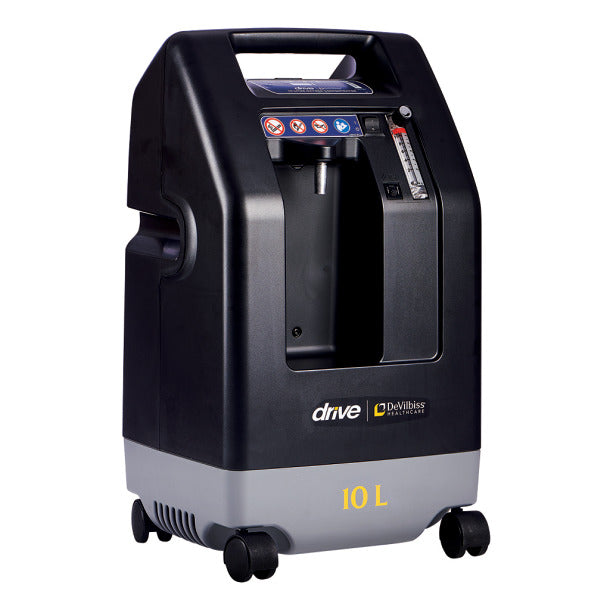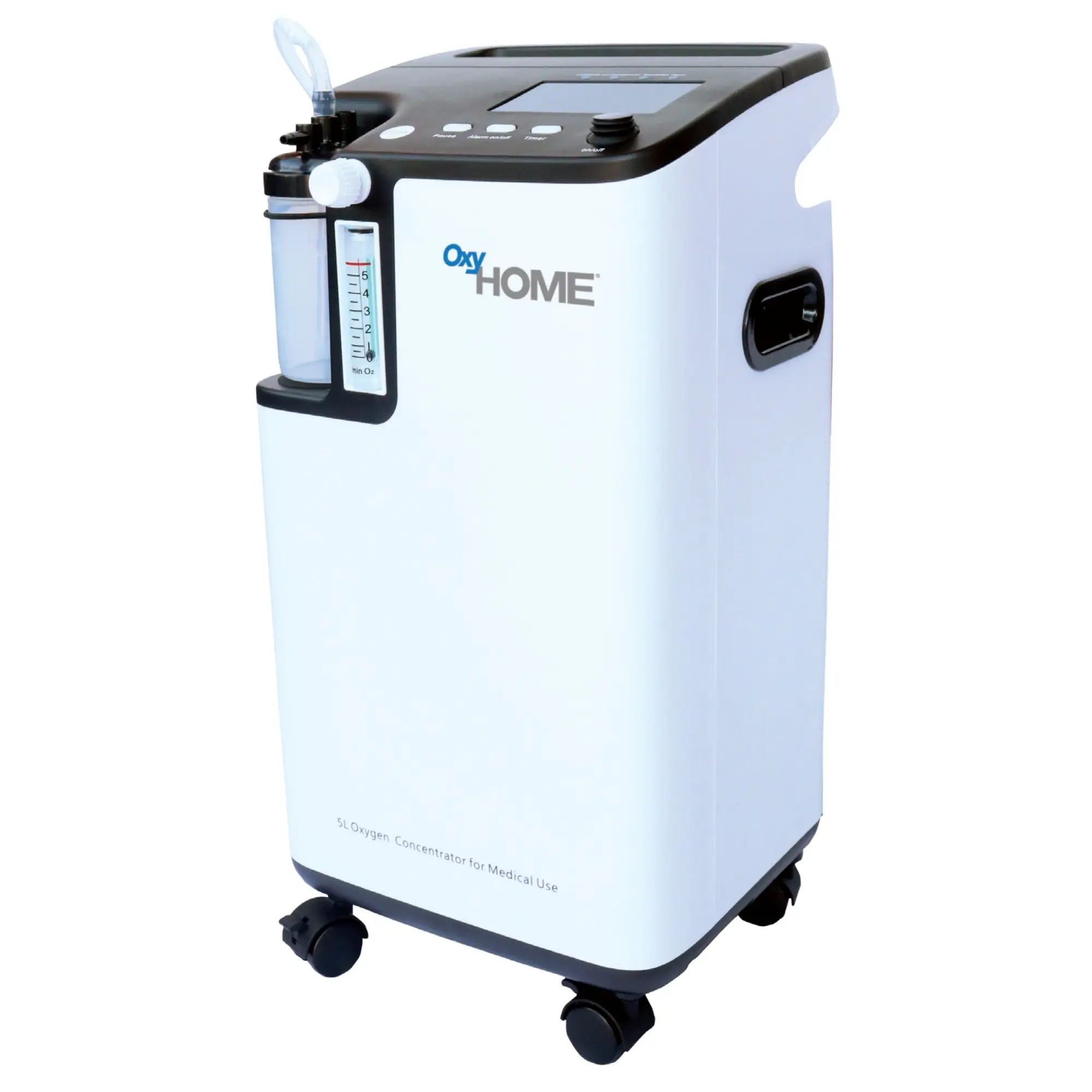Have you ever wondered about the position you naturally find yourself in as you drift off to sleep? It turns out that our bodies instinctively seek comfort when preparing for bedtime, adjusting to a position that feels most soothing.
As the night unfolds, we often toss and turn in our sleep, adapting to various sleeping positions. But is there an optimal sleeping position?
According to medical professionals, the choice of sleeping position can significantly affect your health, with both positive and negative impacts depending on factors such as age and specific medical conditions.
When it comes to people with sleep apnea, sleeping positions can dictate which type of CPAP machine and CPAP mask is more optimal. For example, a nasal pillow mask may be more suitable for people who sleep on their stomach, and for side sleepers, a nasal or nasal pillow mask is more commonly recommended.

What is The Best Sleeping Position?
The best sleep position is one that promotes healthy spinal alignment from your hips to your head. Sleeping on the side or back is more beneficial than sleeping on the stomach. However, it depends on individual needs and preferences.
For example, someone suffering from heartburn shouldn’t sleep on their right side. Meanwhile, sleeping on their side may be ideal for people with lower back pain.
For many people with sleep apnea, side sleeping is the best sleeping position for alleviating both OSA and CSA symptoms.
Certain CPAP masks are more suitable for particular sleeping positions for someone going through CPAP treatment due to sleep apnea. Let’s dive deeper into the different CPAP masks for different sleeping positions and determine which is best for you.
CPAP Mask Types
According to studies, consistent CPAP therapy can help improve sleep apnea symptoms. Yet, a significant number of patients discontinue treatment because they feel uncomfortable with their masks.
This is because they do not use the right mask and don’t feel uncomfortable wearing it. To address this, it's crucial to understand the distinctions between various mask options. By gaining insights into these differences, you can make more informed decisions about the mask that best suits your comfort and ultimately enhances the effectiveness of your CPAP therapy.
CPAP Nasal Mask
The nasal CPAP mask extends from the bridge of the nose to the upper lip and facilitates indirect airflow into the nostrils during CPAP therapy. Considered an excellent choice for individuals requiring higher air pressure, this mask offers a balanced solution for those seeking comfort and effectiveness.
This particular CPAP mask type provides a spectrum of options, presenting a compromise between the lightweight nasal pillow mask and the bulkier full-face mask. It proves especially beneficial for restless sleepers, addressing the potential drawbacks of the other two designs. Often recommended by doctors for patients with frequent movements during sleep, it also caters to those requiring elevated air pressure for therapy. Additionally, individuals who prefer a less obtrusive feel on their face find the nasal CPAP mask fitting.
However, like any medical device, these masks have pros and cons that should be considered before deciding.
Advantages
- •Natural airflow for enhanced comfort
-
•Indirect air supply minimizes movement restrictions
-
•Superior performance at higher pressure settings compared to nasal pillow masks
-
•Accommodating designs ensure a snug fit for various facial structures
-
•Ideal for restless sleepers or those who prefer sleeping on their side
Disadvantages
- •Not suitable for mouth breathers as no mask part touches the chin area, resulting in no resistance. This issue can be addressed using a nasal mask and a chin strap.
-
•Pressure on the bridge of the nose potentially causes discomfort during use.
-
•Challenges with colds or allergies. The obstruction makes it challenging to deliver the required air pressure.
-
•Not recommended for patients who struggle to breathe through their noses, such as those with snoring problems caused by a deviated septum. In such cases, nasal masks may not provide the appropriate therapy.
CPAP Nasal Pillow Mask
This incredibly lightweight mask, in contrast to full-face masks, is characterized by its small size and minimal coverage of the facial area. The lack of substantial contact between the mask and the skin results in patients often not feeling its presence during certain moments.
Air is directed specifically through the nostrils, necessitating low to moderate air pressure settings to prevent potential discomfort, such as a dry or bleeding nose – a concern that can be resolved using a CPAP humidifier.
Advantages
- •Ideal for leisure activities like reading or watching TV before sleep, as it doesn't obstruct vision.
-
•Suitable for individuals wearing glasses, as the mask only covers the area under the nose, allowing glasses to be worn comfortably.
-
•Well-suited for claustrophobic patients due to its minimal coverage and lightweight design.
- •Reduced likelihood of air leaks, especially beneficial for patients with facial hair like beards or moustaches.
Disadvantages
- •Not recommended for individuals requiring high air pressure therapy, as the direct airflow into the nostrils may lead to discomfort and dryness. A humidifier can alleviate some of these concerns.
-
•Not ideal for mouth breathers, as the mask focuses on nostril airflow. However, this can be addressed by using chinstraps to keep the mouth closed during sleep.
CPAP Full-Face Mask
CPAP full-face masks extend beyond the confines of the nose, encompassing both the nose and the mouth. Unlike their nasal counterparts, which focus solely on the nasal region, the full-face mask covers a substantial portion of the face, facilitating CPAP therapy through both airways.
The expanded coverage also means the mask is quite bulky, which can potentially cause discomfort for some patients. Nevertheless, it is an optimal solution for individuals who breathe through their mouths or require CPAP therapy at higher positive airway pressure levels.
Primarily designed for mouth breathers and those in need of elevated pressure, full-face masks offer an ideal option for individuals who struggle with nasal breathing. Additionally, these masks are particularly beneficial for individuals who prefer sleeping on their backs, ensuring effective and comfortable CPAP therapy throughout the night.
Advantages
Ideal for mouth breathers, which may be associated with conditions like frequent colds or allergies.
-
•Surprisingly, many claustrophobic patients find the full-face mask preferable. The exterior coverage avoids direct contact with the inside of the nose, providing a more comfortable experience for some individuals.
-
•Well-suited for individuals who prefer sleeping on their backs, ensuring optimal CPAP therapy effectiveness.
-
•Effective for patients requiring high-pressure settings, as the mask ensures evenly distributed airflow, contributing to a more consistent therapy experience.
Disadvantages
- •More prone to air leaks due to extensive coverage, potentially leading to dry eyes and discomfort. Leaks may also result in airflow reaching the eyes.
-
•The mask's weight can be a drawback for patients who favor sleeping on their side or stomach.
-
•Restricts the wearing of glasses, limiting activities like reading or watching, making it less versatile for certain leisure pursuits while using the mask.
Best Type of CPAP Mask for Stomach Sleepers
Stomach sleepers usually prefer nasal pillow masks since they have fewer touchpoints. The hose connection is attached from the top of the head rather than lining up directly to the middle of the nose area, which allows that particular sleeping position.
Additionally, pairing it with a CPAP pillow makes the experience more comfortable.
A specialized CPAP pillow has tiny openings that allow the mask and the hose to sink into it. So, even when you bury your face into the pillow, it doesn’t displace the mask or the hose.
If you are someone whose mouth falls open while sleeping on your stomach, a chinstrap should be paired with a nasal pillow or nasal mask.
Check out our latest post for a complete list of the best CPAP masks for stomach sleepers.

Best Type of CPAP Mask for Side Sleepers
Using nasal CPAP masks or pillows is highly recommended for those who prefer sleeping on their side. These options provide the flexibility to move at night while minimizing contact points.
Nasal masks, designed to cover only a small portion of the face, offer the advantage of limited movement when shifting during sleep. Their compact coverage also facilitates a snug fit against the face, ensuring optimal effectiveness.
A chinstrap can be a beneficial sleep accessory for side sleepers who tend to experience mouth opening during the night. This accessory helps maintain mouth closure as you shift positions, enhancing the overall CPAP therapy experience.
Ensuring unobstructed CPAP airflow is paramount, especially when sleeping on your side. The unique challenges of side sleeping, such as air pressure and resistance changes, can be addressed through consultation with a healthcare provider or a sleep specialist at Sleeplay. These professionals can assist in adjusting the air pressure settings to suit individual needs better.
Additionally, CPAP machines often feature a ramp-up setting that adapts the air pressure level to the body's requirements. This intelligent adjustment considers the user's needs, providing a comfortable and effective therapy experience.
Check out our latest post for the complete list of the best masks for side sleepers.

Best Type of CPAP Mask for the Fetal Position
Most people naturally adopt a curled-up posture when sleeping on their side, reminiscent of the fetal position. In this common sleep position, one hand is typically positioned under the head while the other rests above it, and the knees are drawn towards the chest.
For those who favor the fetal position, a flexible CPAP mask becomes essential. Nasal masks prove to be an ideal choice for side sleepers, as they fit underneath the nose rather than over it. Opting for a nasal mask with a soft cloth surface and gentle buckles enhances comfort and usability.
When embracing the fetal position during sleep, CPAP nasal masks with a soft surface stand out as the optimal choice, ensuring a snug and comfortable fit for uninterrupted therapy.
Best Type of CPAP Mask for the Log Position
In the log position, a person sleeps straight on their side. Both of their arms stay straight and aligned with the body.
Like the people who sleep in the fetal position, as we have already seen in the previous section, the best CPAP mask for those who sleep in the log position is a nasal CPAP mask. The pressure of the pillow shouldn’t make the mask slide off.
This sleep position increases the pressure on the sides of your face. Your arms are no longer balancing your head by being near it. Instead, your arms are aligned straight to the side of your body. Your arms are no longer a barrier between you and the pillow. Now, the side of your face is squished into the pillow.
This calls for a soft nasal mask or memory foam gel pillow. One that will not come loose during your sleep, nor will it irritate the side of your face or give you red marks because of the material.
Best Type of CPAP Mask for the Yearner Position
In the yearner position, the sleeper is positioned on their side as if they are reaching or yearning for something. Their legs and arms are straight in front of the body, like in the log position. This sleep position can cause some pressure on the side of your face. At the same time, the pressure is less than it is while sleeping with arms straight by your side style. So, a special mask is not needed. The nasal mask that worked for fetal or log is also suitable.
Best Type of CPAP Mask for Back Sleepers
People who sleep on their backs tend to have a wider range of masks, including a nasal mask, nasal pillow mask, or a full face mask. The sleeping position only requires extra care if you have other conditions, such as specific pressure settings, personal comfort needs, or claustrophobia.

Best Type of CPAP Mask for the Soldier Position
In the soldier position, you are on your back - as the name would suggest, you sleep like a soldier. Arms by the side and legs completely still and straightened out.
For a back sleeper, the most important consideration is finding a mask that won’t poke into the back of your head, such as masks with straps, buckles, or hoses. This Fisher & Paykel Full Face CPAP mask seems good for a soldier-style sleeper.
Best Type of CPAP Mask for the Starfish Position
The starfish sleeping position is rare, observed in only one out of twenty individuals. Here, you lie on your back with your arms extended beside your head and a slight upward bend in your legs. While the positioning of your legs may vary, it generally does not impact the overall experience.
Selecting an appropriate sleep mask becomes crucial for those who adopt the starfish position. However, a unique consideration comes into play due to the tendency of some starfish sleepers to move their hands actively during sleep. To mitigate any potential issues, opting for a minimalist sleep mask design is advisable. This ensures that, even as you unconsciously move your arms around, there is minimal risk of entangling the mask with any components of a CPAP mask.
If you prefer, you can still choose between a full mask or a nasal mask, depending on your comfort and breathing requirements. However, given the potential for less interference with hand movements, a nasal mask is often recommended. In this context, the Philips Respironics Dreamwear nasal CPAP mask stands out as a promising option, featuring a design that aligns well with the needs of starfish sleepers.
FAQs
What Are the Best Sleeping Positions with CPAP?
Side sleeping is the recommended position for people with OSA. Research shows that side sleeping is the best position for breathing easier and supporting OSA. Back sleeping is better for CPAP users who use a full-face or nasal mask. This position is also better for high-air-pressure
Sleeping on your back is the least preferred option for those with sleep apnea due to gravity pulling down the tongue and the soft tissues in the throat, further blocking your airways.
However, when prescribed a high-pressure setting, sleeping on the back can be the best position to sleep with CPAP. The back position is more comfortable, as well as more manageable when wearing a full-face mask.
What is the Best CPAP Mask for Active Sleepers?
A good option for active sleepers is CPAP masks with a top-of-the-head tube attachment. This configuration allows freedom of movement through the night while preventing you from getting tangled in your CPAP tubing.
What is the Least Obtrusive CPAP Mask?
Nasal pillow masks are considered the least invasive CPAP masks due to their minimalist and lightweight design. They offer a wide-open field of vision and are also ideal for people who experience feelings of claustrophobia.
Final Thoughts
Choosing the right CPAP mask is crucial, and your sleeping position plays a significant role in this selection process. It's advisable to gather information about different mask types and consult your healthcare provider or contact one of our CPAP experts to determine the most suitable one.
In addition to mask selection, maintaining cleanliness in your CPAP equipment is essential for optimal performance. Ensure you clean your mask and its cushion daily, while the CPAP hose requires a weekly cleaning. If you notice any components not functioning as effectively as before, promptly replace them. This proactive approach prevents the accumulation of oil and dirt in the CPAP parts, ensuring the longevity and effectiveness of your CPAP therapy.
Furthermore, adhering to a consistent and healthy sleep schedule is vital. Going to bed at the same time every night helps regulate your body's internal clock, promoting better sleep quality and overall well-being. By combining proper mask selection, equipment maintenance, and a regular sleep routine, you enhance the effectiveness of your CPAP therapy for a more restful sleep experience.



